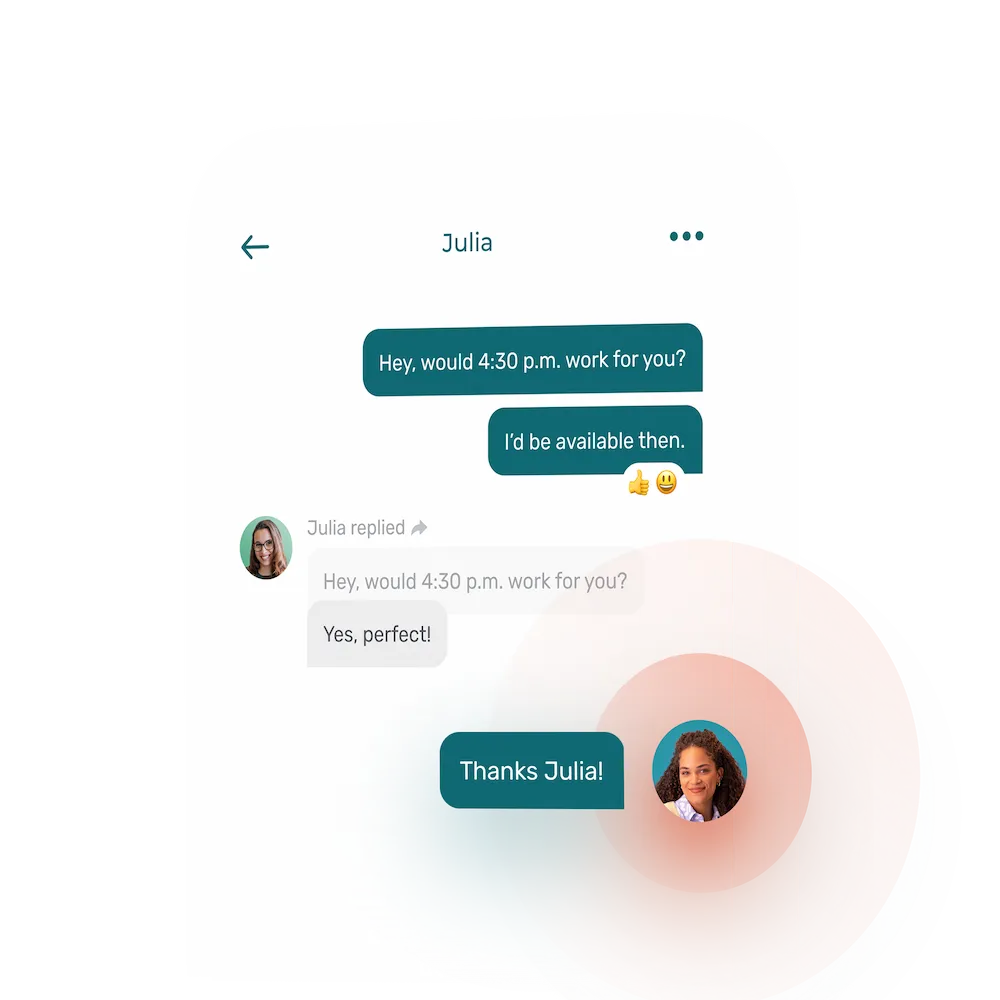Effective horizontal communication is an important key to a company’s success.
It allows information to flow more easily between employees and simplifies everyone’s work. It is often proof of a healthy organization, where one staff can work happily.
In this article, you’ll learn what horizontal communication is, its advantages and drawbacks, and how to improve it in your company.
What Is Horizontal Communication?
Horizontal communication is the sharing of information between employees, departments or teams operating at the same hierarchical level within a company. It is part of an organization’s internal communication methods.
This is the opposite of top-down communication, where information is shared from the top of the corporate hierarchy (managers) to the bottom (employees).
Horizontal communication includes meetings between members of the same team, emails between colleagues, informal discussions over the coffee machine, and so on.
It enables employees to work effectively with each other without having to systematically go through their managers or supervisors. Horizontal communication is based on a relationship of equality between stakeholders. The notion of authority is eliminated.
Typically, these are more informal exchanges that have no direct impact on the company’s objectives and strategies.
Here are some examples of horizontal communication:
- A waiter asks a cook to prepare a starter as a priority because they forgot to put it in the system at the same time as the rest of the order.
- An employee leaves a note for a colleague about some tasks she hasn’t had time to complete in full.
- A customer service employee phones a clerk on the floor to ask for help in solving a customer problem.
What Are the Advantages and Drawbacks of Horizontal Communication?
Horizontal communication is generally the most widespread type of communication in companies. It is essential to the smooth running of operations and cements the quality of relations between company members.
The benefits of good horizontal communication include:
- Encouraging collaboration between members of the same team or different departments
- Increasing visibility of responsibilities between employees at the same hierarchical level
- Improving the sense of unity within the company
- Reducing the sense of competition between employees
- Avoiding endless meetings
- Improving the flow of information within an organization
- Stimulating innovation and creativity
- Improving job satisfaction
- Developing employees’ problem-solving skills
On the other hand, poor horizontal communication can bring its share of problems to an organization. For example:
- Confusing and blocking the progress of certain projects due to too many communication channels
- Increasing conflicts between employees if roles are unclear
- Creating bottlenecks if employees don’t have enough freedom to make decisions
- Creating a lack of structure in team management
- Making it difficult for information to flow freely
- Causing confusion about each role
That’s why it’s vital to take the time to improve horizontal communication within organizations.
How Can You Improve Horizontal Communication in Your Organization?
1. Use a Professional Messaging Tool
Using a professional messaging tool in your company clarifies communication channels and simplifies real-time conversations.
You need to offer your employees a platform where they can exchange ideas more informally and directly. This way, information flows more freely and easily within your team and between different departments.
What’s more, email isn’t really an optimal solution for many workplaces where even if employees are in daily contact, they don’t necessarily have access to a computer.
A professional messaging tool also helps to respect employees’ privacy and simplify the balance between their professional and personal lives. Social media like Facebook Messenger are not platforms that should be used in a professional context.
Many employee management software packages also offer a messaging tool. This means you don’t have to use multiple applications in the course of your work. At the same time, your employees have access to everything they need in one central location.
2. Set Clear Boundaries
To avoid conflict or tension between your employees, set clear limits on communication within the company.
For example, make it clear what hours are acceptable for sending messages. Also make it clear that no employee is required to reply outside working hours, in order to respect their right to disconnect.
And don’t hesitate to show your employees how to turn off their notifications, so they can really unplug from work on their days off or vacation.
Having a communications policy is particularly important for businesses with hours of operation that go beyond 9 to 5, such as restaurants, retail outlets or even retirement homes.
If you are obliged to use several communication channels, be sure to clarify the purpose of each one. This way, your employees will know that if they send an email, they can’t expect an instant response, for example.
To encourage your employees to communicate horizontally, take the time to clarify everyone’s different roles. This will avoid confusion when it comes to making decisions. If you want to be kept informed about certain aspects of their tasks, say so clearly to avoid misunderstandings.
The more transparent and clear you are about your expectations, the more comfortable your employees will feel about their responsibilities.
3. Value the Skills of Each Member of Your Team
Horizontal communication within teams is based on trust in your employees’ skills. The more you value each employee’s competence, the more they will feel at ease communicating clearly with their colleagues to keep their various projects and daily tasks moving forward.
They’ll also be able to express their thoughts clearly and make decisions without always having to consult you. So you can concentrate on other tasks with complete peace of mind.
Take the time to discuss skills development with your employees during performance reviews. This way, you can maximize their strengths with new responsibilities, for example. You’ll also be able to identify the areas they need to work on, and give them the tools to do so.
4. Train Your Employees
Communication is a key skill in any workplace. Some people are naturally better at communicating than others. Good news is that the ability to communicate well can be learned and developed by anyone.
Offer your employees tips and tricks to help them communicate better with their colleagues. For example, you can explain the importance of punctuation and the usefulness of using emojis in informal communications.
Knowing how to express yourself well can avoid a multitude of misunderstandings and conflicts. Working relationships will be more pleasant, and you won’t have to deal with trivial conflicts between your employees.
Each generation doesn’t necessarily use the same communication codes, and this can sometimes cause tension. Teaching employees to communicate well is therefore particularly beneficial in workplaces where several generations rub shoulders.
What’s more, the way people communicate differs from one organization to another, depending on the internal culture. It is therefore particularly interesting to present the culture and discuss how communication takes place between teams when onboarding a new employee.
5. Listen to Your Employees
The best way to improve horizontal communication in your team or company is to take the time to listen to your employees. Ask them clearly for their opinions in one-to-one meetings, or send them an anonymous survey.
This way, you’ll be able to identify areas for improvement and take action quickly.
Being attentive and proactive will help you avoid a multitude of problems. You’ll be able to achieve your objectives more quickly, and your employees will most likely be much more satisfied at work.
Be Transparent in Your Internal Communication Methods
Horizontal communication can quickly become problematic in organizations that are not transparent with their employees.
Information is not always shared in a fair way, and employees are unsure of what they can and cannot say. Being transparent and honest with your team members will help you avoid misunderstandings and simplify collaboration between your employees.










